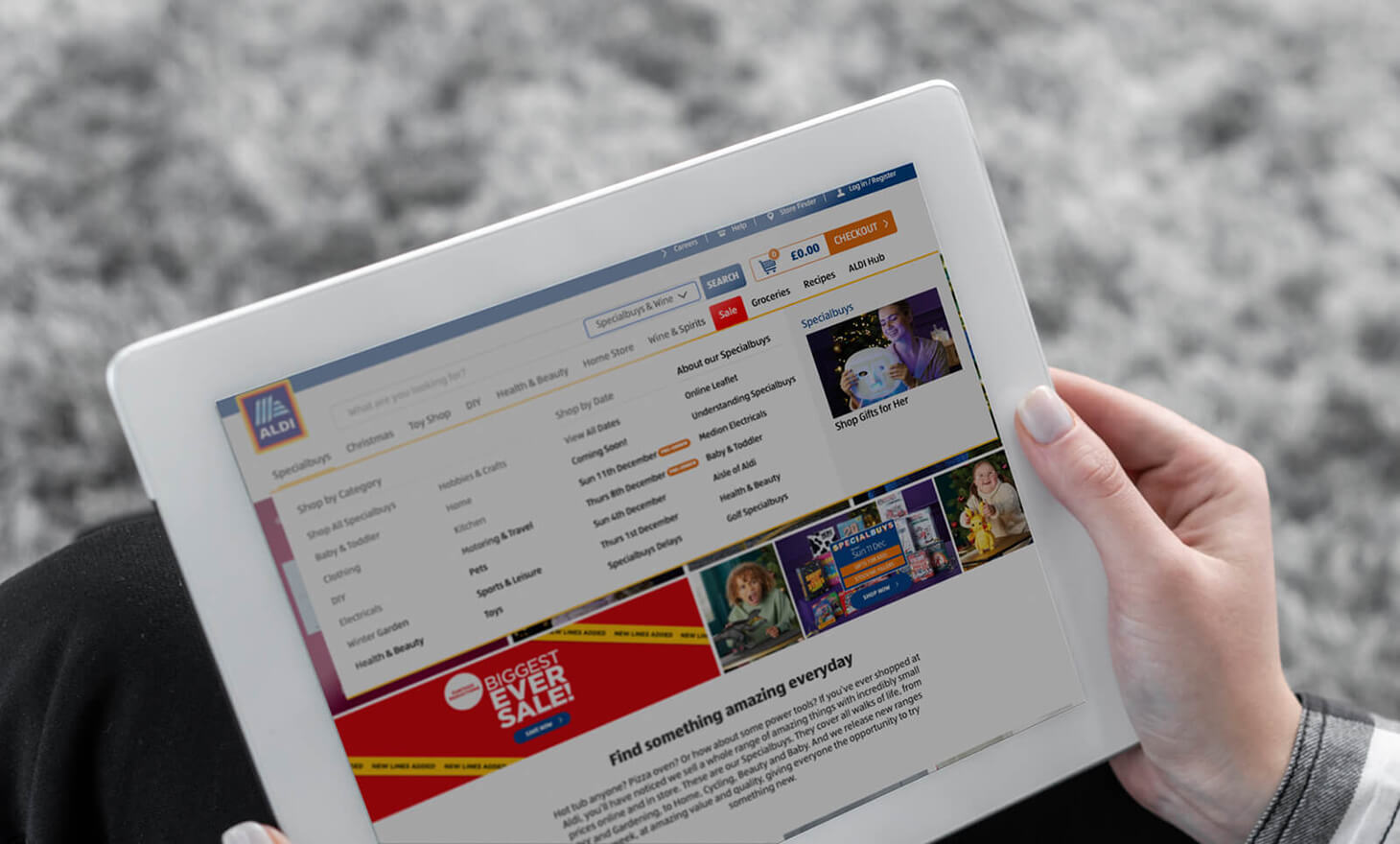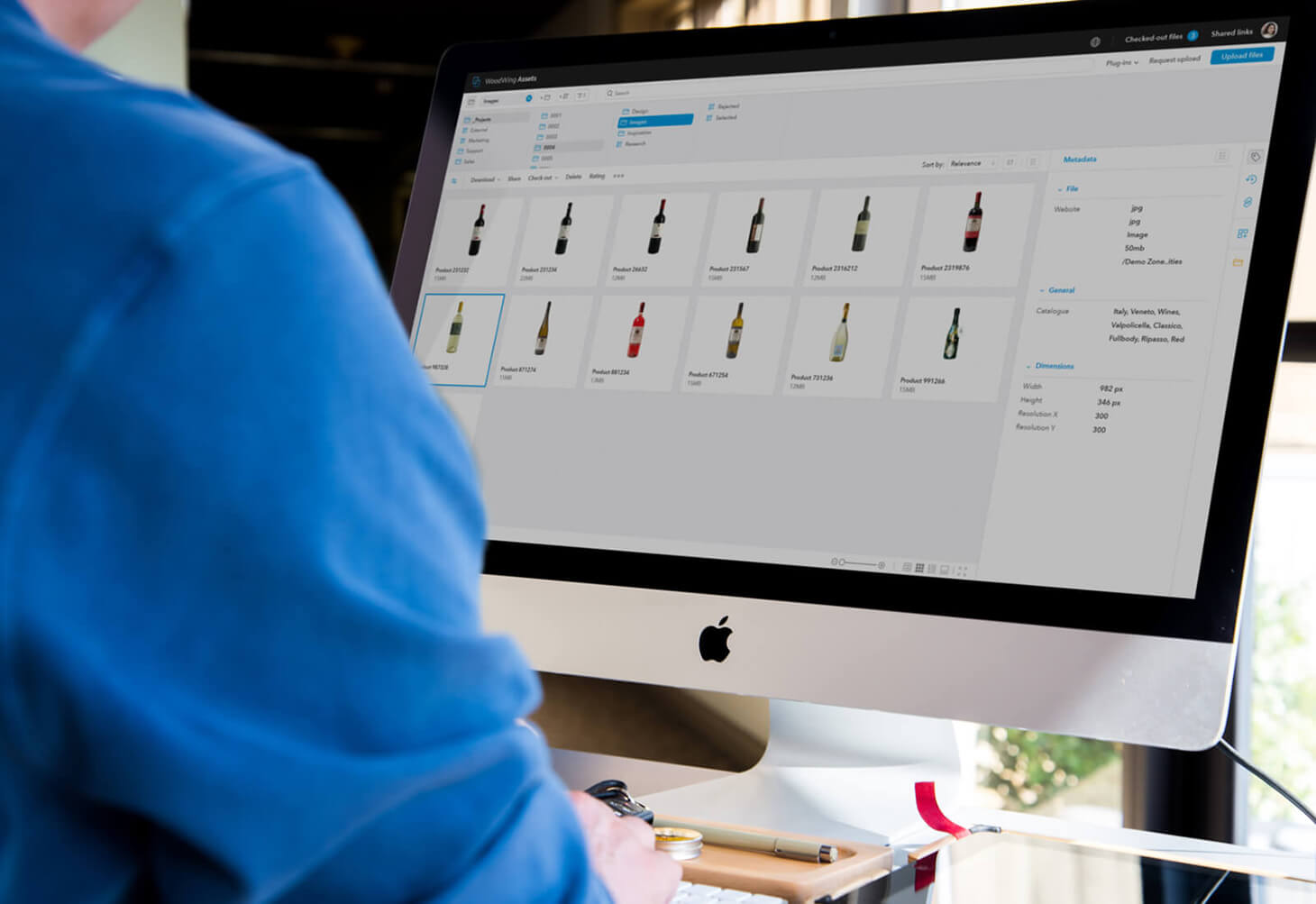Well, your boss has just asked you to find that image and the editable file to go with it, so you can update this asset with refreshed text and convert the image into new formats for this year’s summer campaign. Where do you start looking?

In a typical organization, a request to find assets like this can take between 2-4 hours, often involving a search on multiple shared networks and platforms, a few phone calls to colleagues, some emails, and a desperate text message to that graphic designer who left the team months ago but may remember where he stored the editable asset. In the worst-case scenario, the asset may need to be recreated from scratch, causing extra costs and delays.
Finding assets that have not been properly organized is a mess and a true time waster!
But what if your staff, as well as external partners, distributors, and dealers, could find the right digital assets like a pro? With a well-designed and up-to-date digital asset management metadata and digital asset management taxonomy structure in your DAM tool, your teams will be able to easily find, manage, and share the right content with the right customer at the right time.
So what are metadata and taxonomy?
Although we may not realize it, most of us interact with metadata and taxonomy in some way every day. Did you do any online shopping this week? Did you search for anything on Google today? Did you sign up or register for anything this week? If so, you probably entered metadata about yourself, such as your name, address, email address, and the country you are registering from.
When we think about the digital assets within our organizations, metadata is simply the data about our digital assets. Metadata are the contextual fields that describe the digital assets. For example: size, resolution, usage rights, region, or asset type.
At the most basic level, taxonomy is a drop-down list or hierarchy of options to choose from. More specifically, digital asset taxonomy is the structured data values that you enter into each metadata field. For example Region = EMEA -> UK.
Combined, DAM taxonomy and metadata enable us to organize, browse, and search for our digital assets within the DAM. Taxonomy specifically drives filters and faceted search options.
A great example of how to organize digital assets and digital asset management using metadata and taxonomy is an online grocery shopping experience where grocery store items are broken down into Categories, Departments, Products, and Offers:

Notice this is very different than a folder structure. We have all become accustomed to metatagging digital assets, and searching for assets based purely on that metadata while being guided through the navigation by taxonomy.
Why does my DAM need a metadata and taxonomy structure?
Having a DAM taxonomy and metadata structure in place is essential when it comes to digital asset management and specifically how to organize digital assets. Metatagging digital assets with tags, categories, subject indexes, and custom fields provides a powerful way of making content easily searchable, browsable, and organized for users.
A properly structured DAM taxonomy ensures consistency across terminology, spelling, and phrasing, enabling consistent user experiences. A DAM taxonomy structure enables digital asset contributors to easily categorize digital assets into buckets or classes, allowing digital asset consumers to easily browse and search through content.
This simplifies digital asset navigation for users by providing a logical system for organizing and metatagging digital assets into categories. A metadata and taxonomy structure also helps optimize processes like managing digital asset lifecycles, renewing contracts and licenses, and understanding digital asset or campaign trends.
By using this type of structure to organize content, organizations are able to ensure their digital assets remain secure while streamlining navigation experiences and improving the manageability of digital assets.
Why do I need an enterprise-level DAM taxonomy and metadata structure for data orchestration?
If you are like most companies, you have dozens of databases (and more than a few Excel spreadsheets) that hold data across your organization, be it product or service information, secret ingredients, financial data, campaign information, customer and membership data, and more.
However, these datasets are often siloed. Taking siloed data from multiple locations, making it available and standardized, and enabling technology to automate the flow of data across the organization, is called data orchestration.
Ensuring that data is clean, standardized, accurate and complete across all of your databases (at an enterprise level) will unlock many benefits. However, this is only possible if each database uses the same language and a breakdown of concepts.
For example, if the same campaign is called Spring/Summer in one place and Beach Vibes in another, this data will not be matched and cannot be orchestrated across the business.
The right structure
When enterprise-level DAM taxonomy and metadata structures are set up right, businesses can expect improvements in multiple areas of the business. Specifically for digital asset management, metadata and taxonomy structures can support the following use cases:
- Search and findability
- Organization and categorization
- Usage rights and rights management
- Navigation (enabling browsing, filtering, etc.)
- Relationships between assets
- Permissioning and access
- Automated asset workflows
- Reporting and analytics
For example, if complete and accurate metatagging is properly applied to digital assets as they enter the DAM, users will be able to easily search and find assets quickly.
Search can be made extremely powerful and specific using metadata to enable users to search on brand-specific terminology (and acronyms), synonyms, multiple languages, similarity searches, and more. Artificial intelligence is utilized by some DAM systems to augment and assist in better search results.
Read more:
Many companies also use permissions based on DAM metadata and user groups to ensure that users only see the digital assets they need to access or have the rights to use. Once users find the assets they need, they will be able to view and validate the rights metadata for specific information about which regions or channels they can reuse each asset for.
Where relational metadata has been applied, users will also be able to view and discover any linked assets, such as the editable files for a piece of marketing collateral, the original high-resolution asset, variations and derivatives, and previous versions of each asset.
Metadata can also support the automation of digital asset workflows across a connected technology stack, such as notifying certain users when an asset's status is set to “to be reviewed”, or notifying channel managers before an asset is set to expire and suggesting similar alternative assets, or automatically adding a digital asset to a social media scheduling tool once it has been approved.
However, automating workflows relies on complete and accurate metadata to avoid uncertainty which may require human intervention. And, of course, metadata can also improve your ability to report on asset usage from the DAM, track assets across their entire asset lifecycle, and access more valuable insights.
Examples of DAM taxonomy and metadata structures done right
Comprehensive and accurate DAM metadata can be an invaluable tool to help companies of all sizes organize, manage, deliver, and get the most value out of their digital assets.
In one example, I have worked with a cultural heritage organization whose digital asset metadata schema spanned a mind-boggling 98 fields. While this metadata structure was comprehensive, it was often ignored by overwhelmed uploaders, and as a result, very little metadata was entered, making it almost impossible to find assets in the DAM.
With input from key stakeholders, both digital asset consumers and producers, we managed to reduce the DAM metadata to approximately 16 of the most relevant metadata, powered by business rules and dependencies in the DAM and an organization-specific taxonomy.
Not only did this DAM taxonomy and metadata structure help the uploaders reduce the time spent and confusion during uploads, but it meant that end-users could easily search and filter their search results in the DAM using the standard terminology they used within the business.
Another client used complex relational metadata to easily track and link assets to each other. Assets in the DAM could be linked by Name of the Creator, Photoshoot sets, Campaign Name, as well as versions and variants linking back to the original key visual.
When users found an asset they wanted to use, they would easily be able to explore and discover related assets to find the editable InDesign package to make changes to the asset, a previous version, or inspiration from another asset in the same campaign.
Metadata can also assist in tracking digital assets across multiple locations, automate delivery, and gather insights. One of my clients was keen to track the value and popularity of assets within each campaign they executed throughout the year.
By ensuring that each asset from the campaign was labelled with the correct campaign name (based on a controlled taxonomy list), we were able to track asset usage, whether videos or images were more commonly used, which users and departments had accessed each asset, and make data-driven decisions on where to invest in creative production for future campaigns.

Return of investment
Correctly employed metadata across multiple systems spanning the digital asset lifecycle also allows organizations to gain deeper insights into the return on investment for each digital asset, which results in the ability to make data-informed decisions. Retail, eCommerce, and manufacturing companies I have worked with often use embedded metadata to track the marketing effectiveness, customer engagement, and sales related to each digital asset and channel.
With the right metadata and taxonomy structure built into your DAM, your organizations knows how to organize digital assets and can save time in pinpointing hard-to-find digital assets while discovering valuable trends in user behavior or organizational strategy from metadata analysis. Not to mention that a good metadata and taxonomy structure will make your DAM much more user-friendly, making it easier for users to adopt and love your DAM system.
Ultimately, leveraging the power of metadata allows companies to manage digital assets more effectively and make informed decisions about their future content needs.



